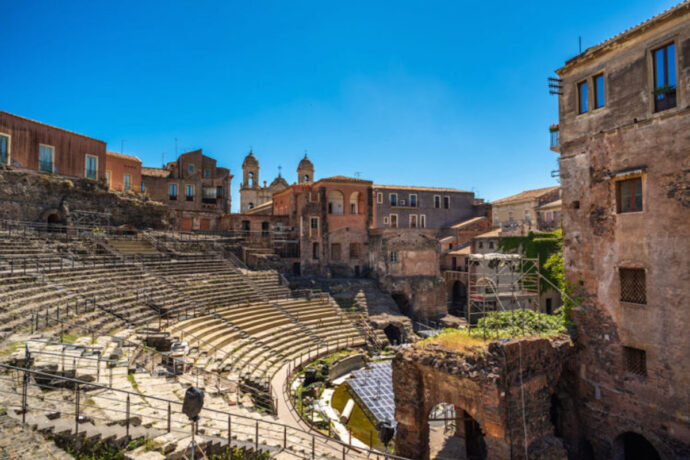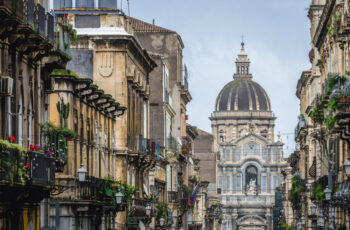Found on the Sicilian flag, hung outside Sicilian homes and businesses, and sold in trinket form in the streets of Sicily is the mysterious Trinacria: the symbol of Sicily. Three bent legs likely belonging to a woman, protrude from the head of hideous mythological gorgon Medusa. Venomous snakes grow from her head in place of hair. Leafy details decorate the space between each of the bent legs. This iconic symbol is recognized worldwide however its ancient mythological origins are often forgotten or even unknown.
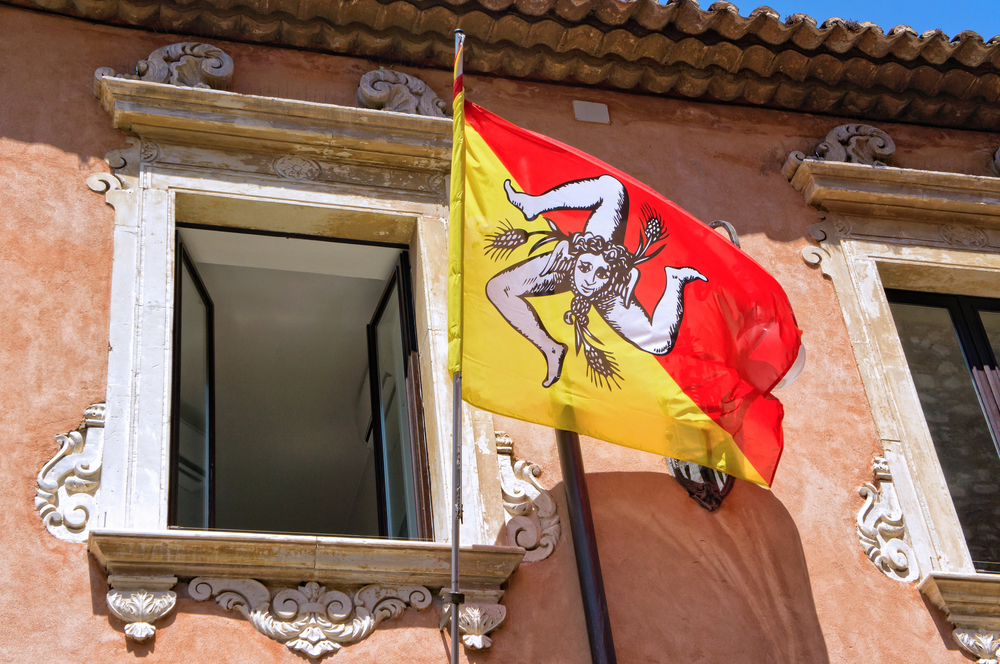
The Sicilian flag was first established in 1943 by Italian politician Andrea Finnochiaro Aprile who led a Sicilian independence movement during World War II. It was then that the Trinacria was recognized around the world as an emblem of Sicily. However the Trinacria symbol had existed long before. It was found engraved on Syracusan coins from the 4th century B.C.. Prior to being called Sicily the island was actually called Trinacria in ancient Greek times. The word Trinacria translates to triangle or three pointed which connotes the triangular shape of Sicily.
The Trinacria contains three bent legs which come together forming a triangle. It is often said that the three legs symbolize the three capes of Sicily: Peloro, Passero and Lilibeo which form the triangular perimeter of Sicily. The legs are specifically those belonging to a woman because they serve as a metaphor for the sensual, breathtaking beauty of the coastal beaches of Sicily. The leafy flourishes that sit between the legs represent the agricultural richness of the land in Sicily. In ancient Rome, Sicily produced large quantities of grain and was deemed the granary of empire. The head of Medusa; which dominates the center of the symbol represents protection and resilience. This meaning can be traced back through Greek mythology and the story of the Greek Gorgon Medusa.
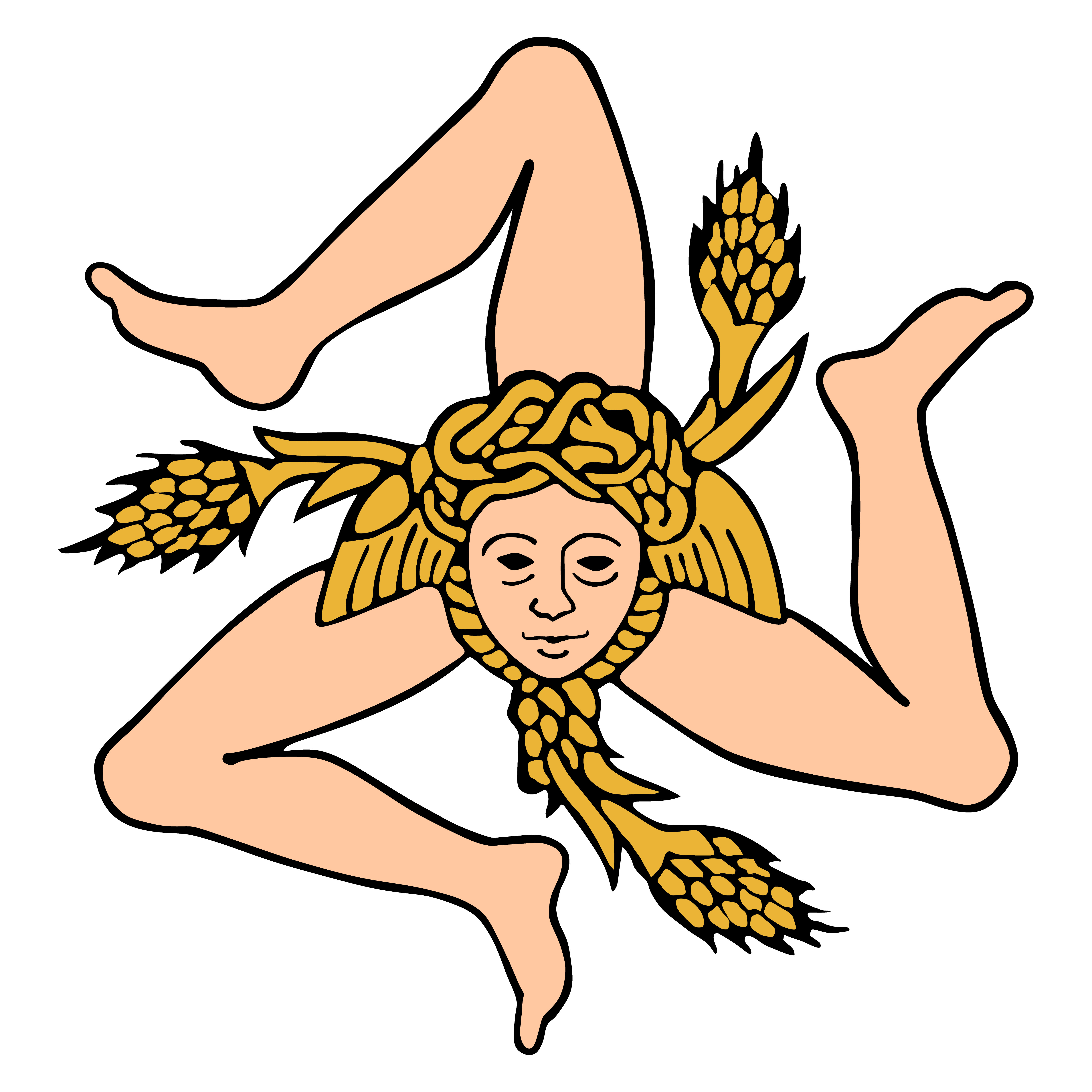
The story goes something like this: Medusa was the daughter of Phorcys and Ceto. Born a beautiful ethereal mortal she was allegedly quite boastful of her good looks and took many lovers. After a brief love affair with Poseidon, Athena cursed Medusa turning her into a hideous winged beast with snakes for hair. After this curse she was said to be so hideous that she could turn any man who gazed upon her face into stone. Perseus, a Greek hero and the son of Zeus, beheaded Medusa and utilized her head as a weapon to turn onlookers to stone. He then gifted her decapitated head to Athena who placed it on her shield for protection. The Medusa head became a symbol of protection because it wards off invaders and turns anyone who gets top close into stone.
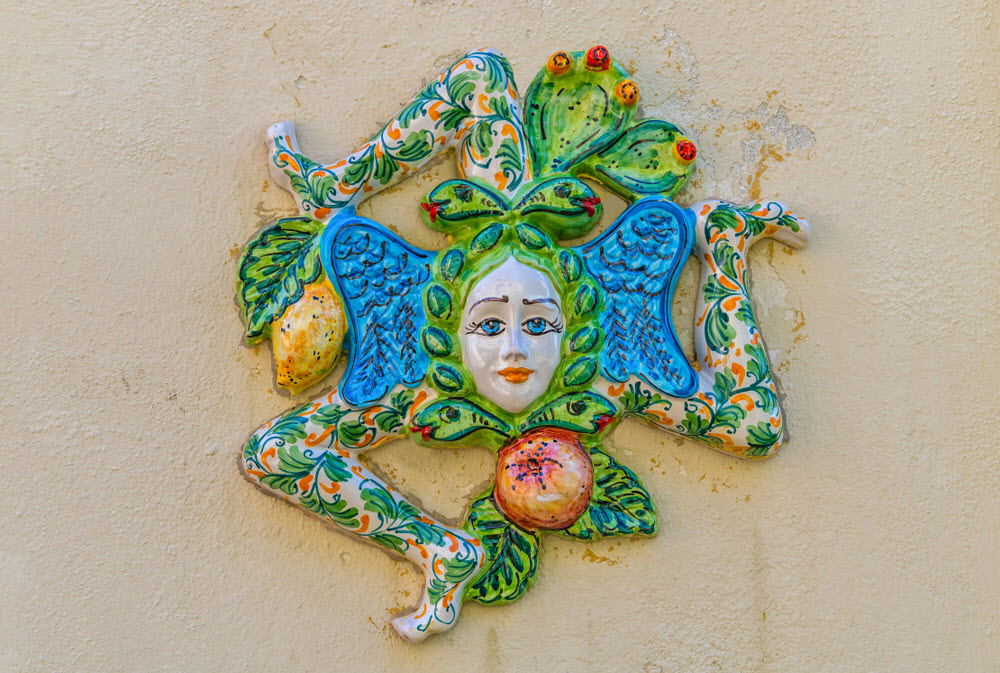
If you ever find yourself in Sicily, you will see the Trinacria being sold in all forms: magnets, key chains, pins, postcards and most stunning of all: ceramic Trinacria plaques that are hand-crafted by local artisans. Be sure to bring home a souvenir with this iconic symbol along with your new knowledge of it’s interesting pictorial meaning.
